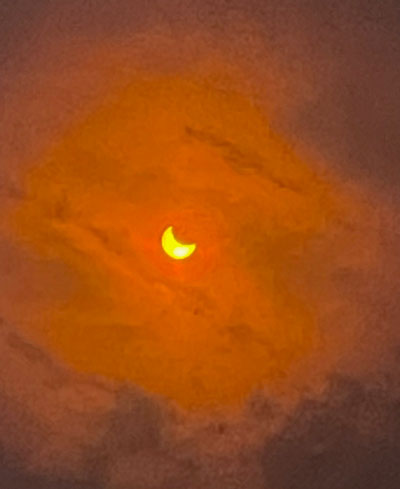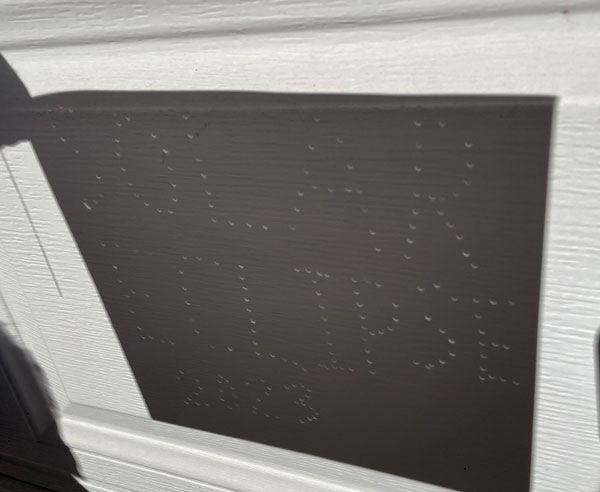Science Snippet:
The 2023 Eclipse
On Saturday, October 14, an annular solar eclipse was visible from parts of North and Central America. Much of the rest of the Americas saw a partial solar eclipse. A solar eclipse occurs when the moon moves between the sun and the earth. Solar eclipses come in three kinds. Partial solar eclipses occur when the moon only blocks part of the sun’s light from reaching the Earth. A total solar eclipse occurs when the moon is exactly lined up between the sun and the earth and entirely hides the sun from view for a small area of the earth. A much larger area experiences a partial solar eclipse at the same time. An annular solar eclipse happens when the moon is lined up properly for a total solar eclipse but the moon is too far away from the earth. The moon is not always the same distance from the Earth. Its distance varies between around 225,000 and 250,000 miles away. When the moon is farther from the Earth, it is too far away to entirely obscure the sun during an eclipse. A ring of sunlight remains visible around the moon.
In Denver, Colorado we had a 79% partial solar eclipse. The eclipse reached maximum coverage at 10:38 AM. It was cloudy all morning until 10:38! You can’t look directly at the sun during an eclipse. If you wear a special type of solar filter glasses, you can look at the sun safely. Solar filter glasses block most of the sun’s light including the sun’s harmful UV rays. A fun project during an eclipse is to write messages with crescent sun images. I used a pin to make a series of holes in the form of letters on a piece of paper. Then I held it in front of my garage door while holding the piece of paper toward the sun. Little crescent sun images were projected through the holes onto the garage door. During a fairly good eclipse, tree leaves also project crescent sun images. Gaps between tree leaves act like a pinhole projector and cause images of the sun to appear all over the ground.
I hope you also had a good time viewing this eclipse. But if you missed it, the next solar eclipse is on April 8, 2024!



